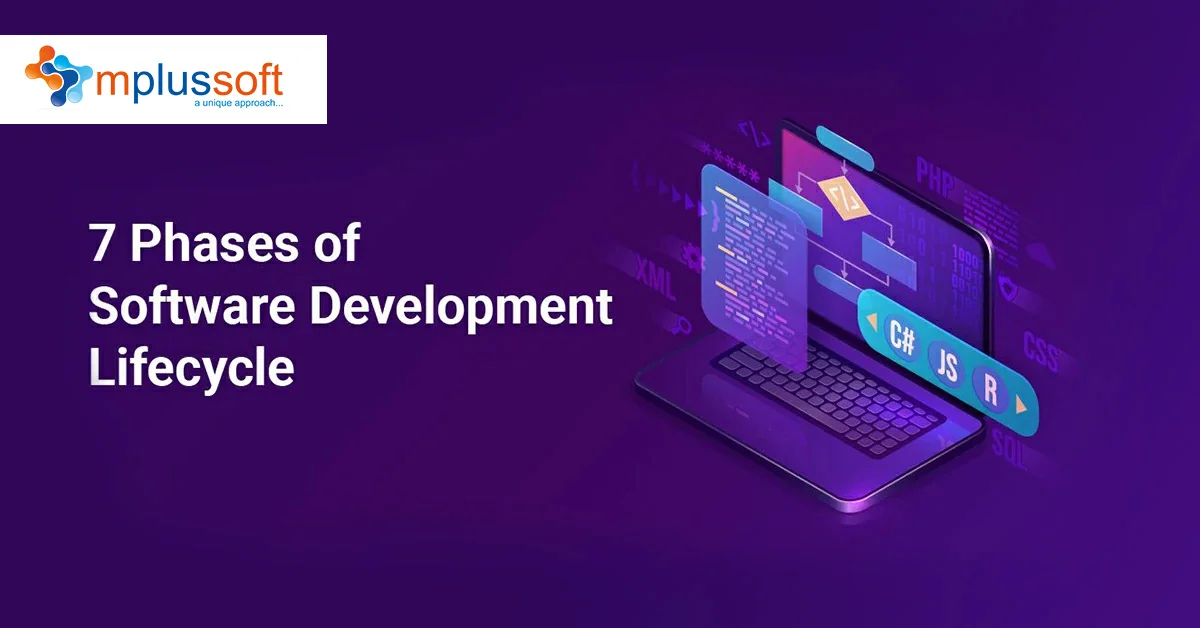7 Phases of Software Development Lifecycle
7 Phases of Software Development Lifecycle
What is the Software Development Life Cycle'
It is a methodology with a clearly defined procedure used to design, analyze, develop and maintain high-quality software. Software Development Life Cycle is an approach for enhancing software quality and the development process as a whole.
SDLC stands for Software Development Life-Cycle
It is also known as Software Development Process
The international standard ISO/IEC 12207 governs software life-cycle procedures. It aspires to be the industry standard for defining all software development and maintenance jobs.
How does the Software Development Life Cycle Works'
The phases of a evelopment life cycle process are determined by the size and aims of the project. Each stage also includes a basic roadmap on how to finish it. In most situations, each development team develops its software development cycle or uses one of the models we'll go through later.
Different phases are required for any project, including software development. You don't have to go through each of these phases in the precise sequence they mentioned here, but you'll certainly need to do so to complete any project successfully.
The Seven Phases of the SDLC are:
- Planning Stage
- Analysis Stage
- Design Stage
- Development Stage
- Testing Stage
- Software Deployment Stage
- Maintenance Stage
Planning Stage
The first step in the software development cycle is Planning. In this phase, the Leaders define the scope and purpose of the project. They also figure out how much time and cost it will take to implement the evaluated needs.
Planning for the quality assurance requirements, identification of the risks associated with the project, Quality control planning, and risk management are also done in the planning stage.
Requirement gathering and analysis
The Requirement Gathering stage includes gathering all specific details required for developing a product. Once the requirement gathering is done, the following step is to explicitly describe and document the product need and gain approval from the client.
The requirement documents include specific fields, diagrams, pie charts, tables, and detailed descriptions of each requirement during the software development lifecycle. This document is known as the SRS (Software Requirement Specification Document).
Design Stage
SRS (Software Requirement Specification Document) is the go-to resource for product architects looking to create the greatest architecture for a new product. Typically, many design approaches for the product architecture are offered and documented in a DDS - Design Document Specification based on the criteria stated in the SRS.
These design documents are designed to provide enough information about the software so that product designers may create it with minimum help. This DDS is evaluated by all relevant stakeholders, and the optimal design strategy for the product is chosen based on several characteristics such as risk assessment, product robustness, design modularity, budget, and time limitations.
Development Stage
The actual development of the product begins at this level of the Software Development Life Cycle. In this stage, a programming code is created based on DDS. A small project may be developed by a single developer, but a large project may be divided into multiple teams.
During this phase of the Software Development Life Cycle, Developers use an Access Control or Source Code Management program for keeping track of code modifications. They also assist in ensuring that various team initiatives are compatible and that the target goal is fulfilled.
After that code is written in a variety of high-level programming languages, including C, C++, Pascal, Java, and PHP. The programming language is chosen based on the sort of software that is being created.
Testing Stage
It's important to test the software before making it available to users. Developers test for defects and flaws in the product and then fix those issues until the product meets the original specifications. Most tests are done automatically like "Security Testing". Another testing can only be done in a particular environment; for complicated deployments, simulated production is used.
Different sections of the software should also be tested to ensure that they operate together seamlessly-performance testing, to eliminate any processing glitches and bugs.
The testing step assists in reducing the number of problems and malfunctions seen by consumers. As a result, there is a higher level of user satisfaction and a higher rate of utilization. Developers Test each component of the software to ensure that all of the various pieces operate independently and that they all work together and do not create chaos.
Software Deployment
In this phase of the Software Development Life Cycle, the product is made available to the users in the appropriate market. Product rollout is done in stages, depending on the company's business plan.
Some companies choose to roll out programs such as "Beta Programme".Software Deployment can be complicated based on the size of the project. The software may first be introduced in a small market sector and then tested in a real-world business setting. Based on the response by the users, necessary enhancements are done after publishing it.
Maintenance Stage
The development cycle is nearly complete at this time. The application has been completed and is being utilized in the field.
However, the phase of maintenance is still crucial. Users will face issues that were not discovered during testing at this time. These mistakes must be rectified, which may result in additional development rounds.
Models of Software Development Life Cycle
The most common models of SDLC are listed below.
Waterfall SDLC Model
The Waterfall SDLC model is the most used development technique. The project overflows into the following stage when each phase is finished. Each phase has its sub-plan, which "waterfalls" into the next phase. This is a tested-and-proven strategy that works.
Pros
Easy to use and understand.
Each phase can be evaluated for persistence and feasibility before moving on.
Perfect for small or medium-sized projects with clear and defined objectives.
Cons
We cannot start the next phase unless and until the previous phase is completed.
Inappropriate for complex projects.
Small details remain unnoticed.
Iterative SDLC Model
This model is based on the principle of repetition. Developers first create an initial basic version of the software rapidly and then after testing and reviewing it, they improve the software in tiny stages or iterations.
Pros
Appropriate for complex projects.
The development is simple to track.
Control on Risks.
Cons
If left checked, the process will quickly deplete resources.
Can be tricky to manage.
Not suitable for small projects.
Spiral SDLC Model
The Spiral model is the most flexible model amongst all the models. It is like the iterative model due to its focus on iterations/repetition. The spiral model goes through the planning, analysis, development, and testing phases, gradually improving each time.
Pros
Due to the greater amount of Risk Analysis, prevention of Risk can be improved.
Good for large and detailed-oriented projects.
Can easily be documented and approved.
Cons
Costly.
Highly trained professionals are required for Risk Analysis.
Not suitable for small-sized projects.
V-Shaped SDLC Model
V- Model is also known as the "Verification and Validation" model. It is an add-on to the waterfall model. In this model, each phase must be completed before moving on to the next phase. To ensure that the transfer to the next step is achievable, each stage includes a current process control.
Pros
Simple and straightforward to use.
Every stage of the V-Shaped model has specific outcomes, making it simple to manage.
Good for small-sized projects, where requirements are fixed and clear.
Cons
Highly rigid.
Bigger Risks are involved.
Not suitable for small-sized projects.
Agile SDLC Model
The Agile SDLC Model is also a type of Incremental model. As the name suggests, the model divides the product into multiple stages and releases a functioning product in a short amount of time. This process produces a series of releases. Due to this, the consumer can view the end outcome and decide if he is happy with it or not. Extreme programming is one of the examples of the Agile Model present in the industry.
Pros
Customer satisfaction is achieved.
The initial version will be released quickly.
Risks can be eliminated due to flexible processes.
Cons
Because it is dependent on customer satisfaction-if the customer is unclear, the team may lead to the incorrect route.
Requires highly client-oriented professional.
There is a chance that the project will take longer than planned due to all the adjustments and modifications.
Conclusion
SDLC or Software Development Life Cycle demonstrates what is going on in the project and where your development process may be improved; in other words, it provides a Bird's Eye View of the overall process. SDLC, like many other business processes, seeks to examine and improve the software development process.







